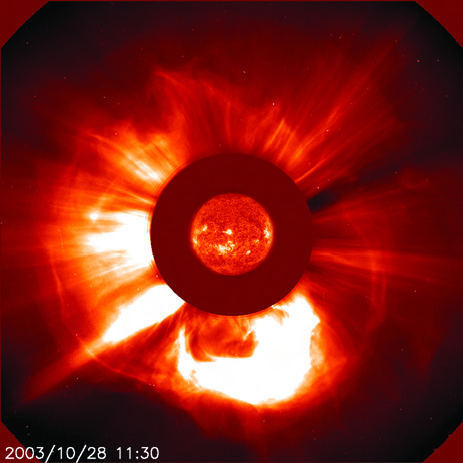Coronal Mass Ejections can change direction

Coronal Mass Ejections
(CME’s) occur when violent magnetic activity on the Sun lifts plasma from the solar surface and ejects it out into space. If a CME reaches Earth, it gets scooped up by our own magnetic field and smashed into the upper atmosphere, causing a beautiful display of Aurora Borealis, and possibly affecting our satellites and electronic infrastructure. But in a surprisingly twist, new observations from SOHO reveal that CME’s do not fly outwards in a straight line, as always assumed. Instead, they change direction and accelerate.Why? Well, plasma is ordinary gas heated up to the point where its atoms are all ionised – the high temperature knocks off electrons, so that a plasma is composed of free electrons swimming around a see of positively charge atomic nuclei, and these nuclei have a strong positive electrical charge. Now as you’ll remember from high-school physics, a magnetic field will deflect a moving charge. This is how both electric motors and old fashioned CRT television’s work. So as all that electrically charged plasma flies away from the sun, it gets scooped up by the powerful solar magnetic field and redirected parallel to the Sun’s equator, which happens to be the region of space where almost everything orbits – planets, asteroids, the lot.
Then the material from the CME runs into the solar wind – a steady stream of subatomic particles ejected from the Sun’s upper atmosphere. This wind travels at a very high speed (typically several hundred kilometers per second), and drags the CME material along with it, giving it a steady acceleration away from the Sun. Watch the video clip below to see the process in action:
